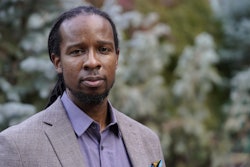Unfit to Print: Jayson Blair and Attacks on Affirmative Action
By Julianne Malveaux
I’m addicted to the printed word so I was as shocked and appalled as the rest of the world when Jayson Blair, the young New York Times reporter, was revealed as an all-out prevaricator. I mean, the young man plagiarized, invented and created stories out of thin air. He did it for a long time and, though people raised questions about him, he was always able to answer their questions. At the end of the day he got caught, raising questions, yet again, about journalistic integrity. And that should be the end of this column and the end of the story, but it’s not.
Too many White folks started with Jayson Blair and ended up raising questions about affirmative action. Now, when the eminent historian Doris Kearns Goodwin was busted plagiarizing, no one asked about female historians. When Stephen Glass spun a series of tales in The New Republic and was rewarded by a six-figure book contract, nobody raised questions about the way he got to the paper. And, when Ruth Shalit, another New Republic writer, was caught pilfering quotes, nobody raised questions about The New Republic‘s fact-checking or hiring policies. And Shalit is now back in journalism. I digress. My point is that the Jayson Blair imbroglio has as much to do with affirmative action flaws as the Stephen Glass case has to do with flaws in the mentoring process.
The anti-affirmative action crowd are like dogs with bones. When they see an African American do something disgraceful, they assume it is because of affirmative action. But affirmative action and diversity initiatives have never advocated people doing a substandard or unethical job. These efforts are about opening doors, giving people chances, allowing them to sink or swim, providing them with a little help, perhaps the coaching or mentorship that might naturally occur for them if they were White men, but holding them to a clear standard of work.
At the New York Times, Howell Raines and Gerald Boyd acknowledged that the paper might have supervised Jayson Blair more closely. The Washington Post‘s Courtland Milloy, William Raspberry and Terry Neal, all made excellent points as Black journalists. Metro section columnist Milloy noted that if Blair was eating little more than “Scotch and cheese doodles,” as one account reported — with appearance deficiencies that alarmed newsroom colleagues — people were ignoring lots of aberrant behavior, to Blair’s detriment and to that of the Times. Why was Blair so loosely supervised? Is it because he was Black or because some (White) folks can’t get past their own stereotypes to call a Black employee on aberrant behavior?
Gerald Boyd, managing editor at the New York Times, is African American. He says he didn’t have a mentor relationship with Blair, but they spoke in the newsroom from time to time. It seems like there were a lot of folks, mostly White, who didn’t know what to do with Blair, and didn’t know how to do it. If the race card is thrown into this game now, it needs to be thrown in to talk about cultural competency and multiracial deficiencies. In other words, a good supervisor ought to know how to manage a multiracial work force, to firmly maintain standards, race matters notwithstanding.
The professor who will always take late papers from African American students, but not from others, does those students no favors. To be sure, lateness can be accepted from time to time, given extenuating circumstances, or even giving someone a break. But the professor who simply assumes that an African American student cannot get a paper in on time is held hostage by his own racism. Ditto, the professor who tolerates lax class attendance from some students, but not others. Since people behave to expectations, who is at fault? The sloppy professor with his shoddy expectations, or the students who choose to conform to them?
In the Blair case, did he get a break not because he was Black, but because his White supervisors didn’t know how to deal with Black folks? I’ll wager that if his immediate supervisor had been African American, Jayson Blair’s butt would have been beat into shape in short order.
In a multicultural world, we had better learn how to talk to each other — to praise and to chastise, to promote and to fire. And we had better be sure our decisions are based on fact and performance, not on race.
Right now, Blair’s life may seem a tragedy. He tarnished the reputation of a major newspaper; and he has also ruined his own reputation. But if Doris Kearns Goodwin, Stephen Glass and Ruth Shalit are any example, there is life after plagiarism, life with bylines and headlines, and six-figure contracts. The anti-affirmative action crowd probably hasn’t lined up to place bets on where Blair will land next though, because his future treatment is proof that affirmative action is necessary. Even in prevarication, White folks are treated better than Black folks, get better breaks, are offered more forgiveness, and welcomed back into the fold far more quickly than their African American counterparts. If you don’t believe me, ask Janet Cooke, the Washington Post writer who had to give back her Pulitzer when she fabricated a story about an 8-year-old heroin addict.
I’m frustrated with Jayson Blair for his misuse of the printed word, for a malfeasance that will reverberate in journalism for years to come. But I’m furious with the New York Times for failing to do the right thing with Jayson Blair. Let’s call this a case of poor supervision, not of affirmative action gone awry.
© Copyright 2005 by DiverseEducation.com


















